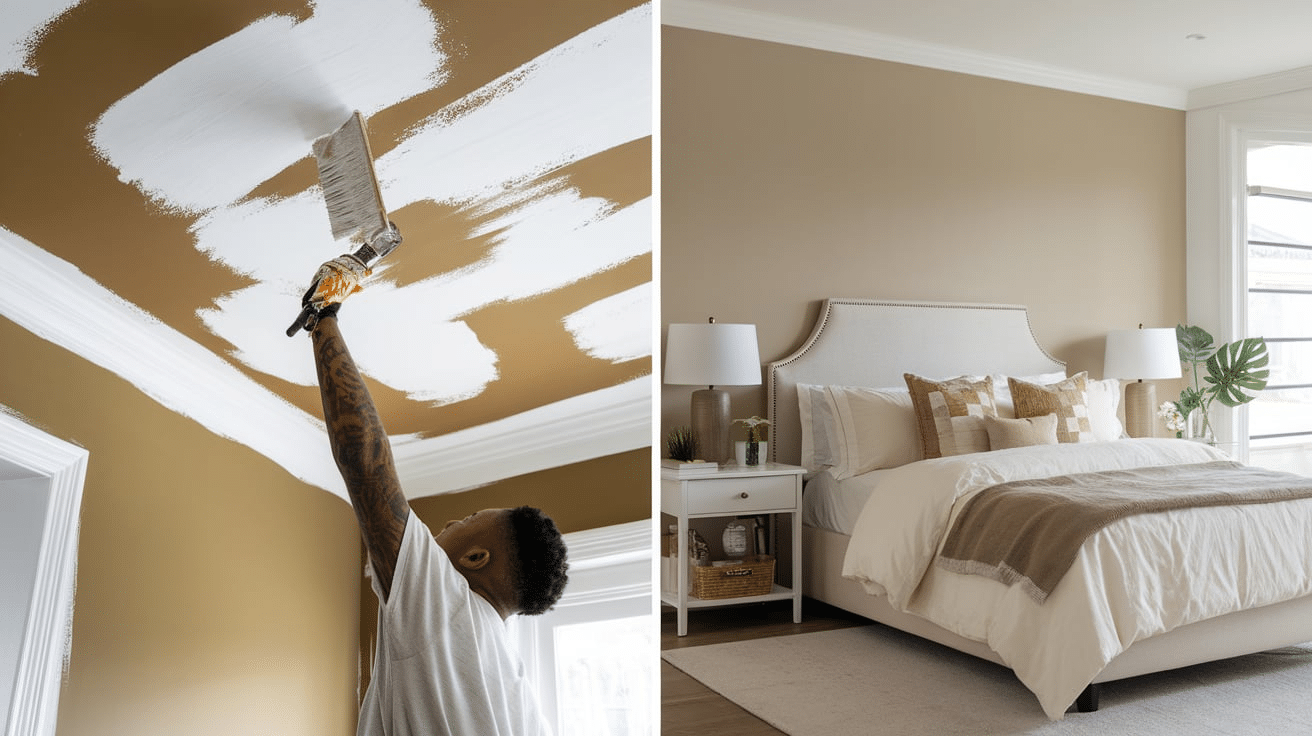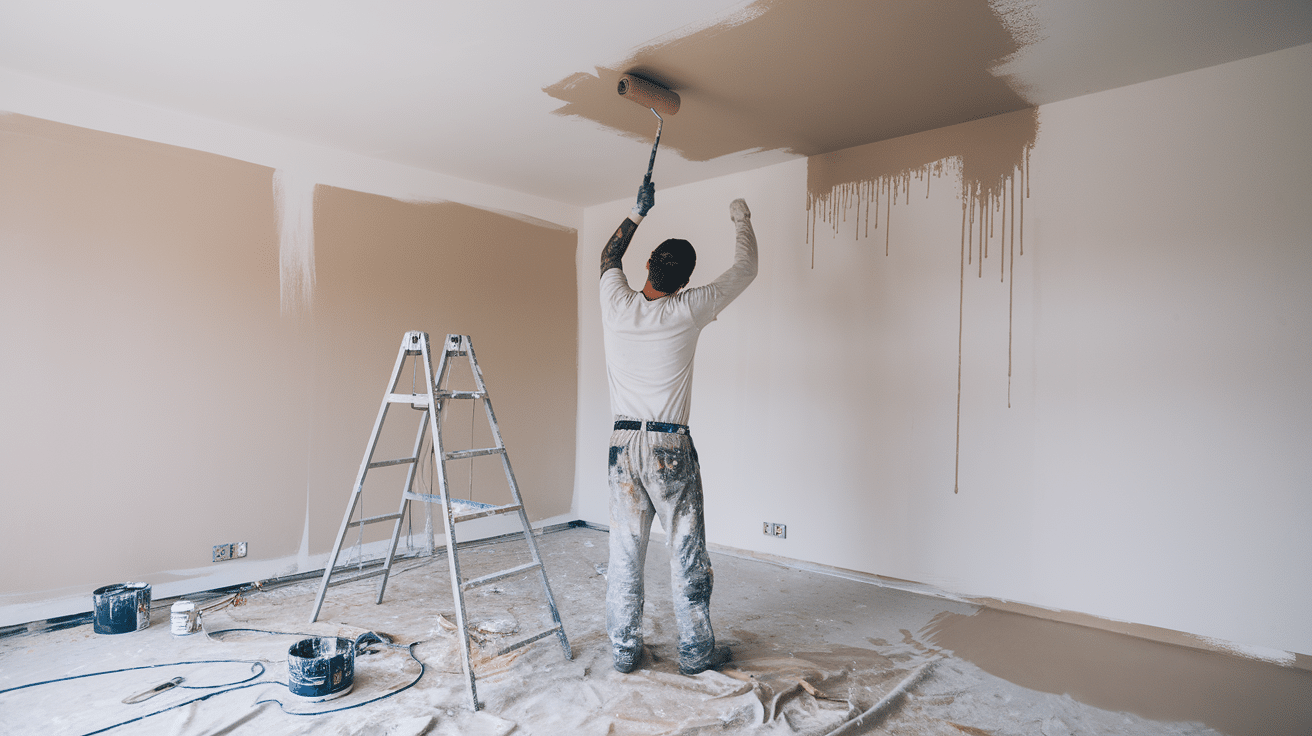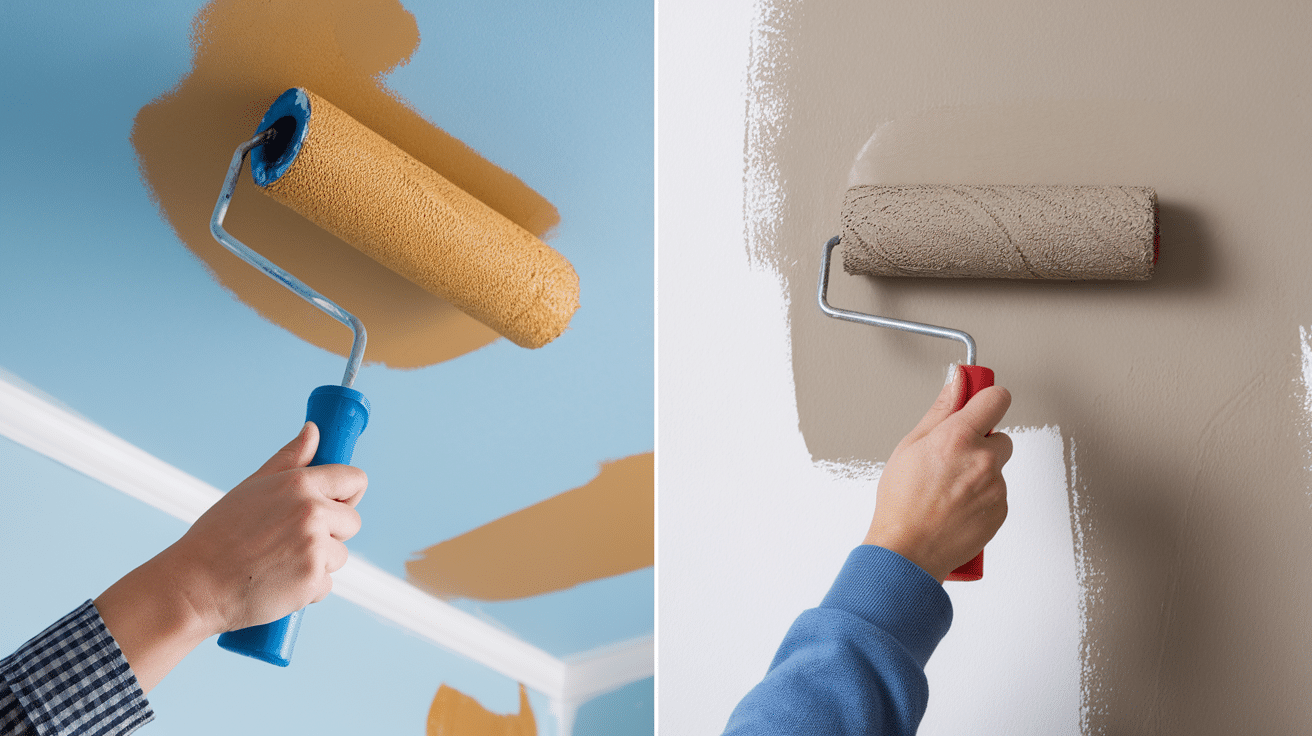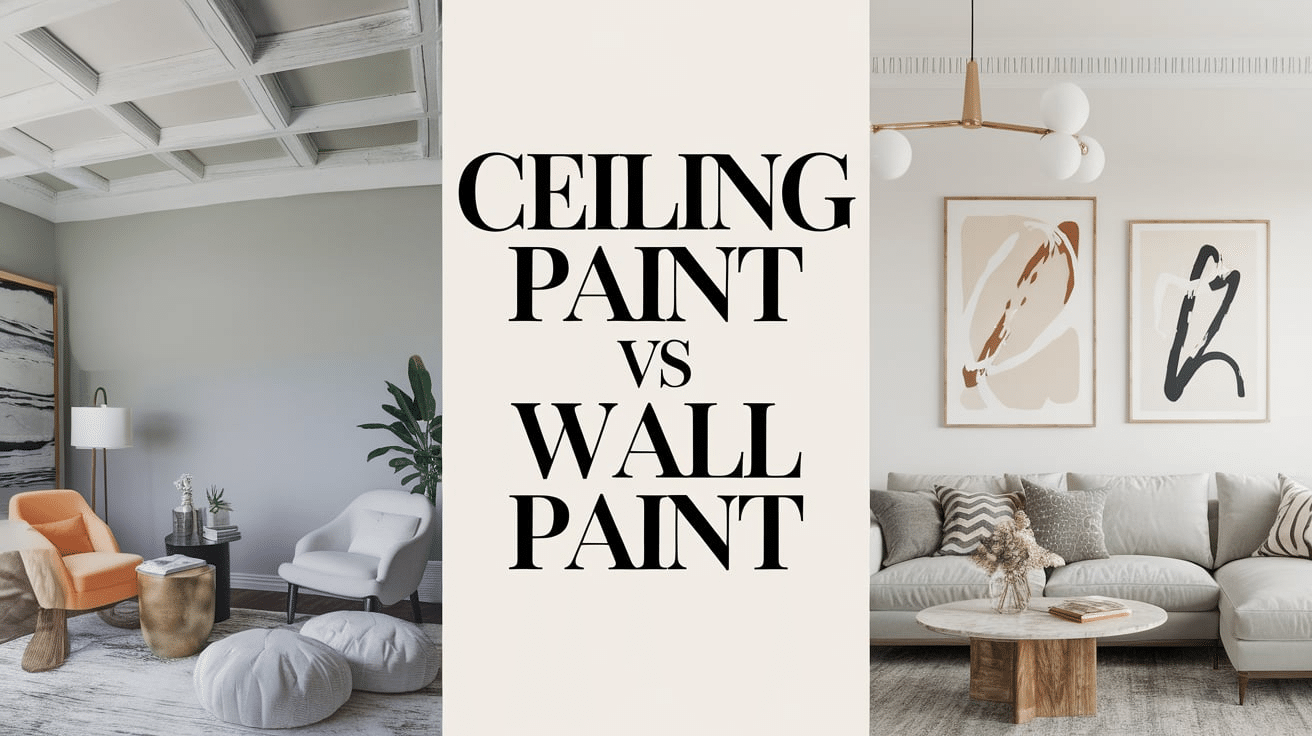Ever wondered if you can use the same paint for your ceiling and your walls? You’re not alone! At first glance, ceiling paint and wall paint might look pretty similar. But they’re actually made to do different jobs.
Using the wrong type of paint can lead to messy drips, uneven color, or a finish that just doesn’t last. That’s why it’s important to know the difference before you start your next painting project.
In this blog, I’ll explain the differences in a super simple way. We’ll talk about what makes ceiling paint and wall paint different, when to use each one, and why it matters. Whether you’re painting a whole room or just doing some touch-ups, this guide will help you get a cleaner, more professional finish.
What is Ceiling Paint and Wall Paint?

Ceiling paint and wall paint are both used to color and protect your home, but they’re made for different parts of a room.
Ceiling paint is specially made to go on the ceiling—the flat surface above your head. It’s usually thicker and doesn’t drip as much, which makes it easier to use overhead. Most ceiling paints come in a flat, white finish that hides small marks and helps brighten the room.
Wall paint, on the other hand, is made for your walls. It comes in lots of colors and different finishes like flat, satin, or glossy. Wall paint is thinner than ceiling paint, so it spreads more easily over large, upright surfaces. It’s also made to handle things like cleaning and daily wear.
Both types of paint do their job well—as long as you use them where they’re meant to go.
Differences Between Ceiling Paint and Wall Paint
Ceiling paint and wall paint may look similar in the can, but they’re made for very different purposes. If you want your paint job to look good and last a long time, it’s important to use the right kind for the right surface.
| Feature | Ceiling Paint | Wall Paint |
|---|---|---|
| Finish | Typically, a matte or flat finish is used to minimize glare and hide imperfections. | Often comes in satin, eggshell, or matte finishes. Satin and eggshell offer a slight sheen for easier cleaning. |
| Thickness | Thicker consistency to help with coverage and to avoid drips. | Thinner consistency for easier application and smoother spreading. |
| Durability | Less durable than wall paint, as ceilings usually don’t get touched frequently. | More durable, designed to withstand scrubbing and wear since walls are frequently touched or cleaned. |
| Texture | Typically smooth to prevent dust and dirt buildup. | May have slight texture (e.g., eggshell or satin) for aesthetic and practical purposes, such as hiding imperfections. |
| Color | Usually, white or light shades help make a room feel larger and brighter. | Available in a wide range of colors to match various design styles. |
| Special Features | May contain added ingredients to reduce the chances of staining or yellowing over time. Designed to mask imperfections in the ceiling. | Often formulated to be more resistant to stains, fingerprints, and moisture (especially in bathrooms or kitchens). |
| Cost | Typically less expensive because it’s formulated to be thicker and simpler in color. | It can be more expensive, especially for high-quality or specialized finishes (e.g., washable or eco-friendly options). |
| Purpose | Primarily for ceilings, helping to create a uniform and bright look. Designed to avoid glare from lighting and hide any ceiling imperfections. | Used for walls, where a variety of finishes and colors are needed for decoration, functionality, and aesthetic appeal. |
Using Ceiling Paint vs Wall Paint
You might be wondering—can you use ceiling paint on walls or wall paint on the ceiling? The short answer is yes, but it’s not always the best idea.
Using Ceiling Paint on Walls

You can use ceiling paint on your walls, but it depends on what you want the room to look like. Ceiling paint has a flat, dull finish, which is great for hiding marks or cracks. So if you want your walls to have a soft, non-shiny look, it might work. But keep in mind—ceiling paint doesn’t clean up as well. It’s not made to handle fingerprints, scuffs, or regular cleaning, so it may not last long on busy walls.
Using Wall Paint on Ceilings

Wall paint on the ceiling? You can do it, but it’s not always fun. Wall paint is thinner, which means it’s more likely to drip when you’re painting overhead. That can be messy and frustrating. Also, wall paint usually has some shine to it, which can make ceiling flaws stand out more. Most people want their ceilings to be low-key, so flat ceiling paint usually looks better.
When to Use Each One

- Use ceiling paint when you’re painting above your head and want a clean, simple finish that hides flaws.
- Use wall paint when you want color, durability, and a finish that fits the room’s style.
Using the right paint in the right place saves time and helps your paint job look neat and last longer.
Choosing the Right Paint for Your Project
Picking the right paint might seem tricky, but it doesn’t have to be. If you know what surface you’re painting and what kind of look you want, you’re already halfway there!
1. Know What You’re Painting
First, ask yourself: am I painting a ceiling or a wall? If it’s a ceiling, go with ceiling paint. It’s thicker, doesn’t drip as much, and gives a smooth, flat finish that hides marks. If you’re painting walls, wall paint is your best choice. It comes in many colors and finishes and is made to handle daily wear.
2. Think About the Room
Different rooms need different kinds of paint. For example, kitchens and bathrooms get steamy and messy, so it’s smart to use a paint that’s easy to wipe clean—like a satin or semi-gloss finish. Bedrooms and living rooms might not need that, so a flat or eggshell finish can work just fine.
3. Pick Your Color and Finish
Wall paint comes in tons of colors. Light colors can make a room feel bigger and brighter. Dark colors can make it feel cozy and bold. Don’t forget to choose a finish too—flat, satin, or glossy. Flat hides flaws but is harder to clean. Glossy is easy to clean but shows more marks. Ceiling paint usually comes in white or light colors with a flat finish.
Choosing the right paint doesn’t have to be hard. Just think about where you’re painting, how much cleaning the area needs, and what kind of look you want. Then, pick the paint that fits best—and you’re good to go!
Mixing Ceiling Paint and Wall Paint
It might sound like a smart way to save time or money, but mixing ceiling paint and wall paint isn’t a great idea. These two types of paint are made differently for a reason, and combining them can cause more problems than it solves.
Ceiling paint is thicker and has a flat finish. It’s made to cover well without dripping and to hide small flaws on your ceiling. Wall paint is thinner, comes in many finishes (like satin or gloss), and is built to stand up to cleaning and touching.
When you mix them, you could end up with a paint that’s too thick or too thin. The color might not turn out right, and the finish could look patchy or uneven. Plus, you won’t know how well it will stick or how long it will last.
If you want good results, it’s best to use each paint as it was meant to be used.
Application Tips for a Great Paint Job
Painting can be easy and fun when you know a few simple tricks. Whether you’re working on walls or ceilings, these quick tips will help you get a clean, smooth finish without a mess.
- Use painter’s tape to keep edges clean and protect trim or light fixtures.
- Cover floors and furniture with drop cloths or old sheets to catch drips.
- Use the right roller—thicker for ceilings, smoother for walls.
- Cut in edges first with a brush before using a roller.
- Don’t overload your brush or roller—too much paint means more drips.
- Work in sections and keep a “wet edge” to avoid streaks or lines.
- Let the first coat dry completely before adding a second one.
Taking your time and using the right tools makes a big difference. A little prep and care will give you a paint job you can be proud of!
Conclusion
Now that you know the difference between ceiling paint and wall paint, you can feel more confident about your next painting project. While both types of paint may look similar in the can, they are made for different jobs.
Ceiling paint is thicker, flat, and perfect for hiding marks on ceilings. Wall paint comes in lots of colors and finishes, and it’s made to handle daily use and cleaning.
Using the right paint in the right place makes your work easier and helps everything look cleaner and more professional. It also saves time and money in the long run.
Whether you’re painting a whole room or just freshening up a small space, the right paint makes all the difference. Happy painting—you’ve got this!

